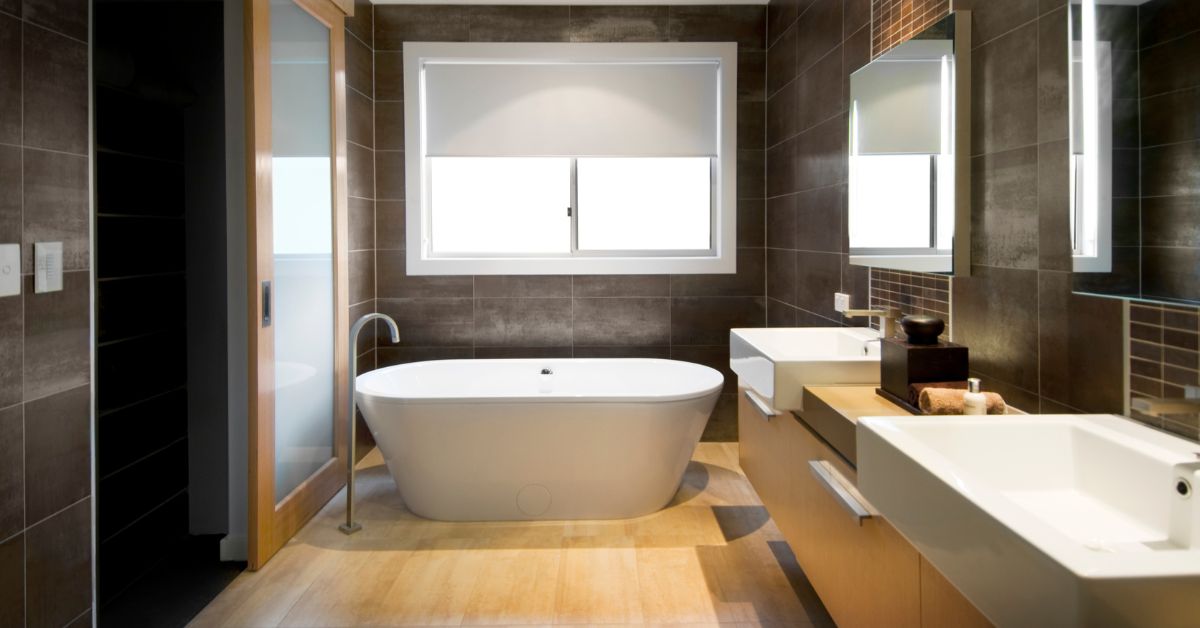Contents
- 1 Introduction to Floating Stairs
- 2 What Sets Floating Stairs Apart?
- 3 Materials and Design Options for Floating Stairs
- 4 Installation Process of Floating Stairs
- 5 Benefits and Drawbacks of Floating Stairs
- 6 Maintaining and Cleaning Floating Stairs
- 7 Tips for Choosing the Right Floating Stairs for Your Home
- 8 Conclusion
Introduction to Floating Stairs
Welcome to the ultimate guide to floating stairs! If you’re looking to add a touch of modern elegance and sophistication to your home, then these stylish staircases might just be the perfect fit for you. Floating stairs have gained immense popularity in recent years due to their unique design and ability to create an illusion of floating in mid-air. In this comprehensive guide, we will take you through everything you need to know about these architectural marvels – from their distinct features and materials options all the way through installation processes, maintenance tips, and choosing the right style for your home. So let’s dive into the world of floating stairs and discover how they can transform your space into a stunning work of art!
What Sets Floating Stairs Apart?
When it comes to staircase design, floating stairs stand out from the crowd. These innovative structures create a sleek and modern aesthetic that can transform any space into a true showstopper.
One of the key features that sets floating stairs apart is their ability to seemingly defy gravity. Unlike traditional staircases, which rely on visible supports and risers, floating stairs appear to “float” in mid-air. This illusion is achieved by anchoring each step to either a wall or a central support beam, giving the impression of weightlessness.
Another distinctive characteristic of floating stairs is their versatility in terms of materials and design options. From glass treads with stainless steel handrails for an ultra-modern look, to wooden steps with wrought iron balusters for a more classic feel, there are endless possibilities when it comes to customizing your floating staircase.
Installation process may vary depending on the specific design and structural requirements but typically involves careful measurement, precise installation of anchors or brackets, and meticulous alignment of each individual step.
While they offer many advantages such as enhancing natural light flow and creating an open feel in your home’s interior space due to their minimalistic design; there are also some drawbacks like potential noise issues if not properly installed or maintained over time.
In terms of maintenance and cleaning, keeping your floating stairs looking pristine is relatively straightforward. Regular dusting and wiping down with a mild cleaner should suffice; however keep in mind that certain materials may require specialized care.
When choosing the right type of floating stairs for your home, consider factors such as material durability, overall style compatibility with existing decor elements within your home’s interior scheme alongwith safety concerns specifically related to children or elderly individuals residing at your place.
Materials and Design Options for Floating Stairs
When it comes to floating stairs, the design options are truly endless. From sleek and modern to rustic and industrial, there is a style to suit every taste. One of the key factors that sets floating stairs apart is their minimalistic design, which allows for a clean and open look in any space.
In terms of materials, you can choose from a wide range of options. For a contemporary feel, glass treads combined with stainless steel or aluminum railings create an elegant and airy aesthetic. If you prefer something more natural, wooden steps paired with metal or cable railings add warmth and character to your staircase.
Another popular choice for floating stairs is concrete. With its durability and versatility, concrete can be molded into various shapes and finishes to achieve a unique look. Whether you opt for polished concrete steps or exposed aggregate treads, this material adds an industrial edge to your staircase.
For those who want to make a bold statement, consider incorporating unconventional materials like acrylic or stone into your stair design. These materials not only provide visual interest but also enhance the overall ambiance of your space.
When selecting the design options for your floating stairs, it’s important to consider factors such as safety regulations, maintenance requirements, and budget constraints. Consulting with an experienced professional will ensure that you make informed decisions that meet both your aesthetic preferences and practical needs.
The choice of materials and design options for floating stairs depends on personal preference as well as the overall style of your home. By carefully considering these factors when designing your staircase, you can create a stunning focal point that seamlessly integrates with your interior décor while adding value to your property.
Installation Process of Floating Stairs
The installation process of floating stairs is a crucial step in achieving that sleek and modern look for your home. While it may seem daunting, with the right knowledge and guidance, you can successfully install these unique staircase designs.
Before starting the installation process, it is important to measure the area accurately and determine the number of steps needed. This will guarantee a seamless and easy installation.
Once you have all the necessary measurements, you can begin by preparing the space where the stairs will be installed. This includes removing any existing flooring or carpeting and ensuring that the area is clean and level.
Next, it’s time to install the support structure for your floating stairs. This typically involves attaching metal brackets or wooden cleats to both walls on either side of where the stairs will go. These brackets provide stability and support for each step.
After securing the support structure, it’s time to start installing each individual step. Depending on your chosen design, these steps could be made from various materials such as wood or glass. Each step needs to be attached securely to the brackets or cleats using adhesive or screws.
Once all steps are installed, make sure they are properly aligned and leveled before adding any finishing touches such as handrails or balustrades.
Installing floating stairs requires precision and attention to detail but with patience and careful execution, you can transform your space into a truly stunning architectural feature. So why wait? Start planning your own floating stair project today!
Benefits and Drawbacks of Floating Stairs
Floating stairs have gained popularity in recent years due to their sleek and modern design. These unique staircases create an illusion of floating in mid-air, adding a touch of elegance to any space. But like any architectural feature, there are both benefits and drawbacks to consider before installing floating stairs in your home.
One major benefit of floating stairs is their visual appeal. They can instantly transform the look and feel of a room, making it appear more open and spacious. The minimalist design also allows for better light flow, creating a brighter atmosphere.
Another advantage is the flexibility they offer in terms of materials and design options. Floating stairs can be made from various materials such as wood, glass, or metal, allowing homeowners to choose a style that complements their interior décor.
Additionally, floating stairs are often easier to clean compared to traditional staircase designs. With no risers or intricate detailing, dust and dirt can be easily swept away or vacuumed.
However, it’s important to consider the drawbacks as well when deciding on floating stairs for your home. One drawback is the potential lack of safety handrails. While some designs incorporate handrails seamlessly into the structure itself, others may require additional installation for safety purposes.
Another consideration is cost. Floating staircases tend to be more expensive than traditional staircases due to their unique construction methods and materials used.
Installation complexity should not be overlooked. Properly installing floating stairs requires professional expertise since they rely on hidden structural supports rather than visible stringers or risers.
Maintaining and Cleaning Floating Stairs
Maintaining and cleaning floating stairs is essential to keep them looking their best and ensure their longevity. Regular maintenance will help prevent any issues from arising and minimize the need for costly repairs.
To start, it’s important to regularly inspect your floating stairs for any signs of wear or damage. Check for loose screws, chips in the wood or other materials, and any areas that may need repair. Addressing these issues promptly can prevent further damage and potential safety hazards.
When it comes to cleaning, a gentle approach is key. Use a soft cloth or sponge dampened with water and mild soap to wipe down each step and railing. Avoid using harsh chemicals or abrasive cleaners as they can damage the finish of your stairs.
For wooden floating stairs, it’s recommended to periodically apply a protective coating such as varnish or polyurethane to maintain their appearance and protect them from moisture. This will also make cleaning easier by creating a barrier against stains and spills.
Regularly sweeping or vacuuming your floating stairs will help remove dirt, dust, and debris that can accumulate over time. Be sure to pay attention to hard-to-reach areas like corners or under the steps where dirt may gather.
Consider implementing preventative measures such as placing mats at the bottom of the staircase to catch dirt before it reaches your floating stairs. Also encourage family members and guests to remove their shoes before using the staircase if possible.
By following these simple maintenance tips, you can keep your floating stairs looking beautiful while ensuring they remain safe for years to come!
Tips for Choosing the Right Floating Stairs for Your Home
- When it comes to choosing the right floating stairs for your home, there are several factors to consider. First and foremost, think about the overall style and aesthetic you want to achieve in your space. Floating stairs come in a variety of materials and designs, so finding one that complements your existing decor is essential.
- Next, consider the functionality of the staircase. Are you looking for something purely decorative or do you need it to serve a practical purpose as well? Think about how often the stairs will be used and who will be using them. This will help determine whether you need a more durable material like metal or if wood would suffice.
- Another important factor is safety. Floating stairs can be visually striking but they should also meet building codes and regulations. Make sure that whatever design you choose adheres to these standards and includes features such as handrails for added support.
- Budget is also an important consideration when selecting floating stairs. Determine how much you’re willing to spend before starting your search, as this will help narrow down your options.
- Don’t forget about maintenance requirements. Depending on the material chosen, some floating staircases may require more upkeep than others. Consider how much time and effort you’re willing to invest in cleaning and maintaining your stairs before making a decision.
- By taking into account these tips for choosing the right floating stairs for your home, you’ll be able to find a staircase that not only enhances the visual appeal of your space but also meets all your functional needs
Conclusion
Floating stairs are a modern and stylish choice for homeowners looking to add elegance and uniqueness to their space. With their sleek design, variety of materials, and easy installation process, they have become increasingly popular in recent years.
What sets floating stairs apart from traditional staircase designs is the absence of visible supports or risers. This creates an illusion that the steps are floating in mid-air, giving a sense of lightness and openness to any room. Whether you choose a minimalist glass design or opt for wooden treads with hidden brackets, floating stairs can effortlessly enhance the aesthetic appeal of your home.
When it comes to materials and design options, there is no shortage of choices available. From solid wood to metal accents, you can select the materials that best suit your personal style and complement your existing decor. The versatility in design allows you to create a truly customized staircase that reflects your individual taste.
Installing floating stairs may require professional assistance due to their unique structural requirements. However, once properly installed, these staircases offer numerous benefits such as space optimization, improved natural lighting flow between floors,and increased property value.
While there are many advantages associated with floating stairs,such as their visual appeal and flexibility in customization,it’s important to consider some potential drawbacks as well.
The open nature of these staircases may not be suitable for households with young children or pets who need extra safety measures.



